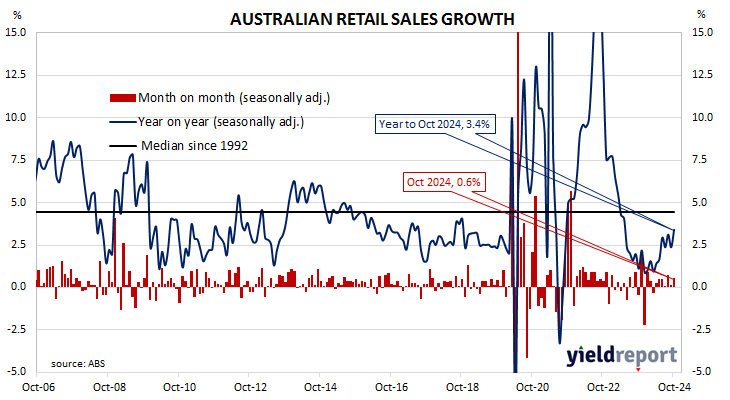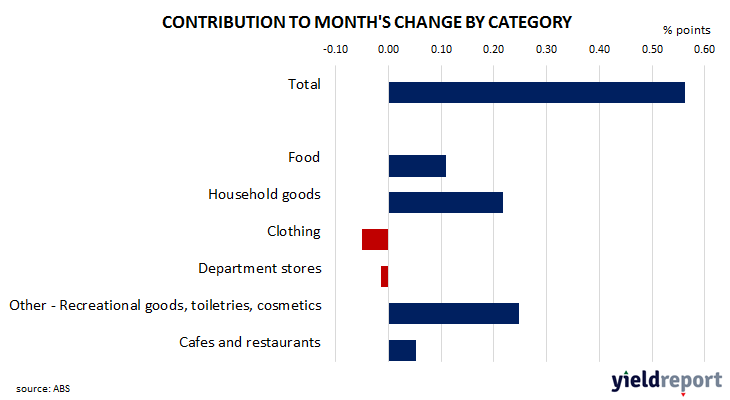Summary: Retail sales up 0.6% in October, more than expected; up 3.4% on 12-month basis; Westpac: implies steady recovery in nominal per capita spending; short-term ACGB yields rise modestly, longer-terms yields steady; rate-cut expectations soften; Westpac: expect spending growth to recover from here; largest influence on result from “Other” segment.
Growth figures of domestic retail sales spent most of the 2010s at levels below the post-1992 average. While economic conditions had been generally favourable, wage growth and inflation rates were low. Expenditures on goods then jumped in the early stages of 2020 as government restrictions severely altered households’ spending habits. Households mostly reverted to their usual patterns as restrictions eased in the latter part of 2020 and throughout 2021.
According to the latest ABS figures, total retail sales increased by 0.6% on a seasonally adjusted basis in October. The result was greater than the 0.4% increase which had been generally expected as well as September’s 0.1% rise. Sales increased by 3.4% on an annual basis, up from September’s comparable figure of 2.4%.
“With population growth running around 2.3% per year, the result implies a steady recovery in nominal per capita spending trends,” said Westpac economist Neha Sharma.
Short-term Australian Commonwealth Government bond yields rose modestly on the day while longer-term yields finished unchanged, ignoring the noticeable downward movement of US Treasury yields on Friday night. By the close of business, the 3-year ACGB yield had added 2bps to 3.93% while 10-year and 20-year yields both finished steady at 4.35% and 4.68% respectively.
Expectations regarding rate cuts in the next twelve months softened a touch. Cash futures contracts implied an average of 4.335% in December, 4.305% in February and 4.135% in May. November 2025 contracts implied 3.80%, 54bps less than the current cash rate.
“Stage 3 tax cuts, cost-of-living relief and moderating inflation appear to be supporting the upward trend in retail turnover,” said ANZ economist Sophia Angala. “We continue to expect spending growth to recover from here, with near-term strength as price-sensitive households participate in end-of-year sales events like Black Friday.”
Retail sales are typically segmented into six categories, with the “Food” segment accounting for 40% of total sales. However, the largest influence on the month’s total came from the “Other” segment where sales rose by 1.6%.



